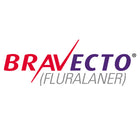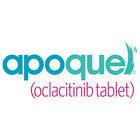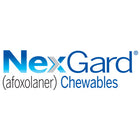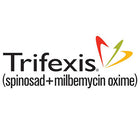Summer is here, and with it comes the joys of longer days, warmer weather, and more opportunities to spend time outdoors.
However, as you slather on your sunscreen and grad your shades, have you thought about how to protect your furry friend from the sun's harmful rays?
Yes, pets can get sunburned too, and they need protection just like us! While fur provides some natural protection against UV rays, it's not enough, especially for pets with short or light-colored hair and those with exposed skin.
Just like humans, pets can suffer from sunburn, which can lead to pain, peeling, and an increased risk of skin cancer.
Understanding Pet Sunburn and Its Risks

Sunburn in pets appear similarly to humans, with redness, tenderness, and sometimes blistering. Areas most susceptible include the nose, ears, belly, and any other parts where the fur is thin, or the skin is exposed. Repeated sun exposure can lead to more severe issues such as:
-
Skin Cancer: Pets, especially cats, can develop squamous cell carcinoma, a type of skin cancer often linked to UV exposure.
-
Heatstroke: Sunburned skin can exacerbate the effects of heat, making it harder for your pet to regulate their body temperature.
-
Pain and Discomfort: Just like us, pets experience pain and discomfort from sunburn, which can affect their overall well-being and mood.
Tips to protect your pets from harmful UV rays
Ensuring sun safety for your pet is crucial, especially during hot summer months. Here are some essential tips to protect your furry friends from harmful UV rays:
-
Limit Sun Exposure: Avoid outdoor activities during peak sun hours (10 AM to 4 PM). Instead, opt for walks in the early morning or late evening when the sun is less intense.
-
Provide Shade: If your pet is outside, ensure they have access to shaded areas to escape direct sunlight.
-
Use Pet-Safe Sunscreen: Apply sunscreen specifically formulated for pets on exposed skin areas, especially for pets with light or thin coats. Look for products with an SPF of at least 15.
-
Protective Clothing: Consider dressing your pet in protective clothing designed to block UV rays. This is particularly beneficial for pets that love to bask in the sun.
-
Hydration: Always provide fresh water to keep your pet hydrated, as heat can lead to dehydration.
-
Watch for Signs of Overheating: Be vigilant for signs of heatstroke, such as excessive panting, drooling, or lethargy. If you notice these symptoms, move your pet to a cooler area and consult a veterinarian.
-
Indoor Monitoring: For indoor pets, monitor their sunbathing habits. Cats, in particular, may seek out sunny spots, which can lead to sunburn.
-
Regular Vet Check-ups: Regular veterinary visits can help identify any skin issues early and ensure your pet's overall health.
Which Pets Are Most at Risk?
While all pets can benefit from sun protection, some are at higher risk than others:
-
Light-Colored Pets: Pets with white or light-colored fur are more prone to sunburn due to their lack of pigment.
-
Hairless Breeds: Breeds like the Sphynx cat or the Chinese Crested dog have little to no fur, making them extremely vulnerable to sunburn.
-
Short-Haired Breeds: Pets with short hair, such as Beagles or Boxers, have less fur to shield their skin from the sun.
-
Pets with Thin Fur: Areas where fur is naturally thin, like the tips of ears or around the nose, are common spots for sunburn.
Sun Safety Measures
- Ensure that your pet is hydrated and has access to fresh, cool water at all times
- Make sure that your pet has access to shady areas when outdoors
- Avoid going outside during peak sun hours (10 a.m- 4 p.m)
Importance of Sunscreen and Protective Gear For Pets
The use of pet-safe sunscreen and protective gear is essential for safeguarding pets against the harmful effects of UV rays, particularly for those that are at a higher risk of developing sunburn or other skin-related conditions. Just like humans, pets can suffer from sunburn, heat exhaustion, and other heat-related issues, particularly during the hotter months. Applying sunscreen and using protective clothing can make a significant difference in ensuring their safety and comfort.
Pet-safe sunscreen is specifically formulated to address the unique needs of animals. Unlike human sunscreens that may contain harmful chemicals, fragrances, or ingredients that can be toxic to pets if ingested,Pet-safe sunscreen and protective clothing are vital tools for safeguarding your furry friend from the harmful effects of sun exposure. Just as humans can suffer from sunburn and long-term skin damage due to UV radiation, pets are also at risk, particularly those with lighter coats or exposed skin. Here's a detailed overview of these protective measures, along with guidance on proper application and usage.
Importance of Pet-Safe Sunscreen
-
Skin Sensitivity: Pets, especially those with short or thin fur, have skin that is more susceptible to sunburn. This can lead to painful skin irritations, blisters, and even more serious conditions like skin cancer over time.
-
Targeted Protection: Sunscreen can effectively protect vulnerable areas such as the nose, ears, and belly, which are often exposed when pets are outside. Applying sunscreen to these areas ensures they receive adequate sun protection.
-
Preventing Long-Term Damage: Regular use of sunscreen can minimize the risk of developing skin problems over the years, making it a crucial aspect of summer safety.
Choosing the Right Sunscreen
When selecting a sunscreen for your pet, ensure it is specifically formulated for animals. Human sunscreens can contain ingredients that are toxic to pets, such as zinc oxide. Look for sunscreens with the following attributes:
-
SPF of at least 15: A higher SPF offers better protection against UV rays.
-
Non-toxic ingredients: Avoid products containing irritating substances or harmful chemicals.
-
Water-resistant: If your pet is likely to get wet, choose a water-resistant formula.
Proper Application of Sunscreen
To maximize the effectiveness of pet-safe sunscreen, follow these steps:
-
Clean the Area: Before applying, ensure the skin is clean and free of dirt and debris. This will promote better absorption and adherence of the product.
-
Apply Generously: Use enough product to cover all exposed areas thoroughly. Key spots to focus on include:
- Nose
- Ears
- Belly
- Areas with sparse fur
- Between the toes (if the dog will be in sandy or hot environments)
-
Massage in Gently: Rub the sunscreen into the skin gently but thoroughly to ensure full coverage. Avoid applying it near your pet’s eyes, as it can cause irritation.
-
Safe Drying: Allow the sunscreen to dry completely before letting your pet go outside. This helps prevent them from licking it off, which could lead to ingestion of harmful ingredients.
-
Reapply as Needed: Reapply sunscreen every two hours, especially after your pet has been swimming or after excessive sweating, to maintain effective protection.
Importance of Protective Clothing
Protective clothing serves as an excellent complement to sunscreen, providing an additional barrier against harmful UV rays. Here’s why it’s important:
-
Full Body Coverage: Clothing can protect large areas of the skin, significantly reducing the risk of sunburn. This is especially beneficial for pets that are outside for extended periods.
-
Temperature Regulation: Certain protective gear can help regulate body temperature and keep pets cooler in high heat, which is an additional benefit during summer months.
-
Variety of Options: A wide range of protective clothing is available, including UV-blocking shirts, vests, and even hats designed for pets. These products are specifically made to fit your pet comfortably while providing sun protection.
Choosing and Using Protective Clothing
-
Fit and Comfort: Select clothing that fits well without restricting movement. It should be snug but not tight, allowing your pet to freely run and play.
-
Material: Choose breathable fabrics made from UV-resistant materials. This will help keep your pet comfortable while protecting them from sun exposure.
-
Check for Labels: Look for clothing that is specifically labeled as UV-blocking. Avoid items that do not provide adequate protection.
-
Gradual Introduction: If your pet is not used to wearing clothing, introduce it gradually. Allow them to wear it indoors for short periods, increasing the duration as they become comfortable.
-
Supervision: Always supervise your pet while they are wearing clothing to ensure they do not chew or get entangled in it.
By incorporating pet-safe sunscreen and protective clothing into your summer routine, you can significantly enhance your pet’s protection from the sun’s harmful rays.
These measures not only help prevent immediate damage but also contribute to your pet's long-term health and well-being.When selecting the right sunscreen and UV-protective clothing for your pets, it’s essential to consider the various factors that will ensure their safety and comfort.
Different pets may have distinct needs and vulnerabilities to sun exposure. Below are recommendations tailored for common pets—specifically dogs and cats, along with some guidance for less common pets like rabbits and guinea pigs.
Choosing the Right Sunscreen for Pets
-
Formulation: Always opt for sunscreens specifically designed for pets. Human sunscreens may contain harmful ingredients such as zinc oxide or para-aminobenzoic acid (PABA) that are toxic to pets if ingested.
-
SPF Rating: Look for products with a minimum SPF of 15. This rating will provide adequate protection for areas of exposed skin, particularly on dogs and cats which may have less fur.
-
Application Areas: Focus on applying sunscreen to vulnerable areas such as:
-
Nose: Especially for breeds with sharp variations in coat color, as their noses can be prone to sunburn.
-
Ears: Many dogs have thinner fur on their ears, making them susceptible to sun exposure.
-
Belly: If your pet lies on their back in the sun, their belly may also need protection.
-
Around the Eyes: Consider using sunscreen formulations made for pets that are designed to be safe around sensitive areas.
-
Recommended Brands:
-
Epi-Pet Sun Protector: This is a popular pet-safe sunscreen that provides robust coverage and is non-toxic. It’s available in a spray form, making it easy to apply.
-
PetSafe Pet Sunscreen: Another great option, this sunscreen is water-resistant and provides broad-spectrum protection against UVA and UVB rays.
-
Veterinary Formula Clinical Care: Known for its moisturizing properties, this sunscreen helps protect while also nurturing the skin.
-
Usage: Apply sunscreen at least 30 minutes before sun exposure and reapply every two hours or after swimming or heavy activity. Always consult product instructions for specific usage recommendations.
UV-Protective Clothing for Pets
-
Material: Look for lightweight, breathable fabrics that provide UV protection. Clothing labelled with UV protection features a UPF (Ultraviolet Protection Factor) rating which indicates how much UV radiation can penetrate the fabric. A UPF of 30 or higher is desirable.
-
Fit: Ensure that the clothing fits your pet comfortably, allowing for mobility without being too tight. Proper fit can also prevent the clothing from chafing the skin.
-
Types of Clothing:
-
Sun Shirts and UV Coats: These are designed to shield your pet from the sun while allowing them to cool down actively. Brands like PetFusion and Ruffwear offer stylish yet functional options.
-
Hats: Lightweight, breathable hats can protect vulnerable areas of the face, such as the ears and nose. Look for hats specifically made for pets with adjustable straps for a secure fit.
-
Dog Swimsuits: For water-loving pets, swimsuits made with UV-protective fabric can provide sun safety while also being functional for water activities.
-
Recommended Brands:
-
Pawz Dog Boots: In addition to their foot protection, they also offer UV-rated clothing options to keep your pet safe from heat and sun exposure on their paws.
-
K9 Active: Known for producing high-quality sun protective clothing for dogs, their products range from cooling vests to body suits.
-
Puppy Love Pet Boutique: This store offers a variety of UV shirts and protective gear in different sizes and styles suitable for various breeds.
Check Out
In all cases, always monitor your pet's behavior and comfort level while using sunscreen and wearing clothing. Ensure they can easily move, breathe, and cool down without any distress. As sun safety is paramount, incorporating these protective measures into your pet care routine will help in preventing sun-related health issues, thereby ensuring that your furry friends can enjoy the outdoors safely
Related Articles
How Do I Protect My Pets from Fleas & Ticks? [2024 GUIDE]


![Sun Safety Tips for Pets - Sunscreens, Protective Clothing [2024] | HardyPaw](http://hardypaw.com/cdn/shop/files/tm-hardypaw-logo-800x200_250x.png?v=1669662342)
![Sun Safety Tips for Pets - Sunscreens, Protective Clothing [2024]](http://hardypaw.com/cdn/shop/articles/dogsummer_1280x.jpg?v=1717092656)

![Antihistamines for Dog Allergies - Types, Symptoms and Treatment [GUIDE]](http://hardypaw.com/cdn/shop/articles/Antihistamines_for_Dog-Allergies_600x.png?v=1721129810)






